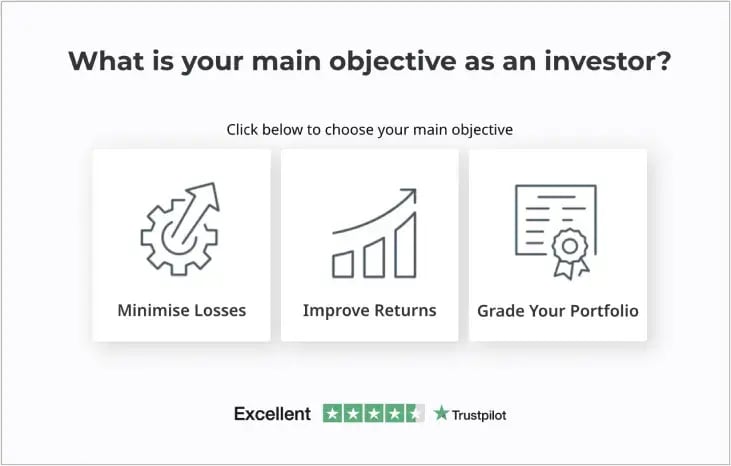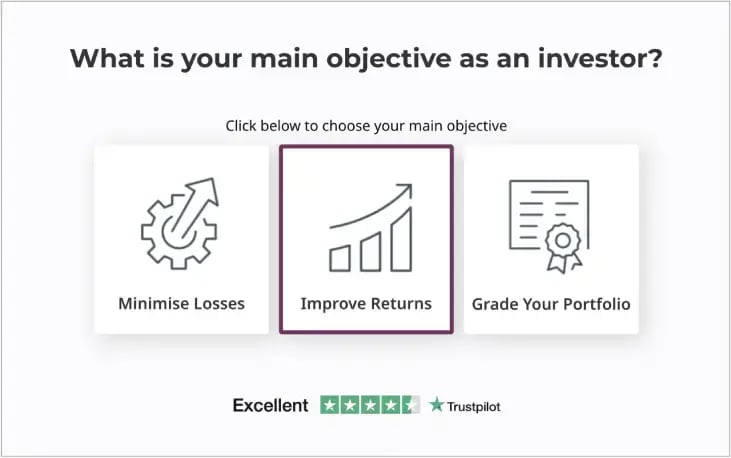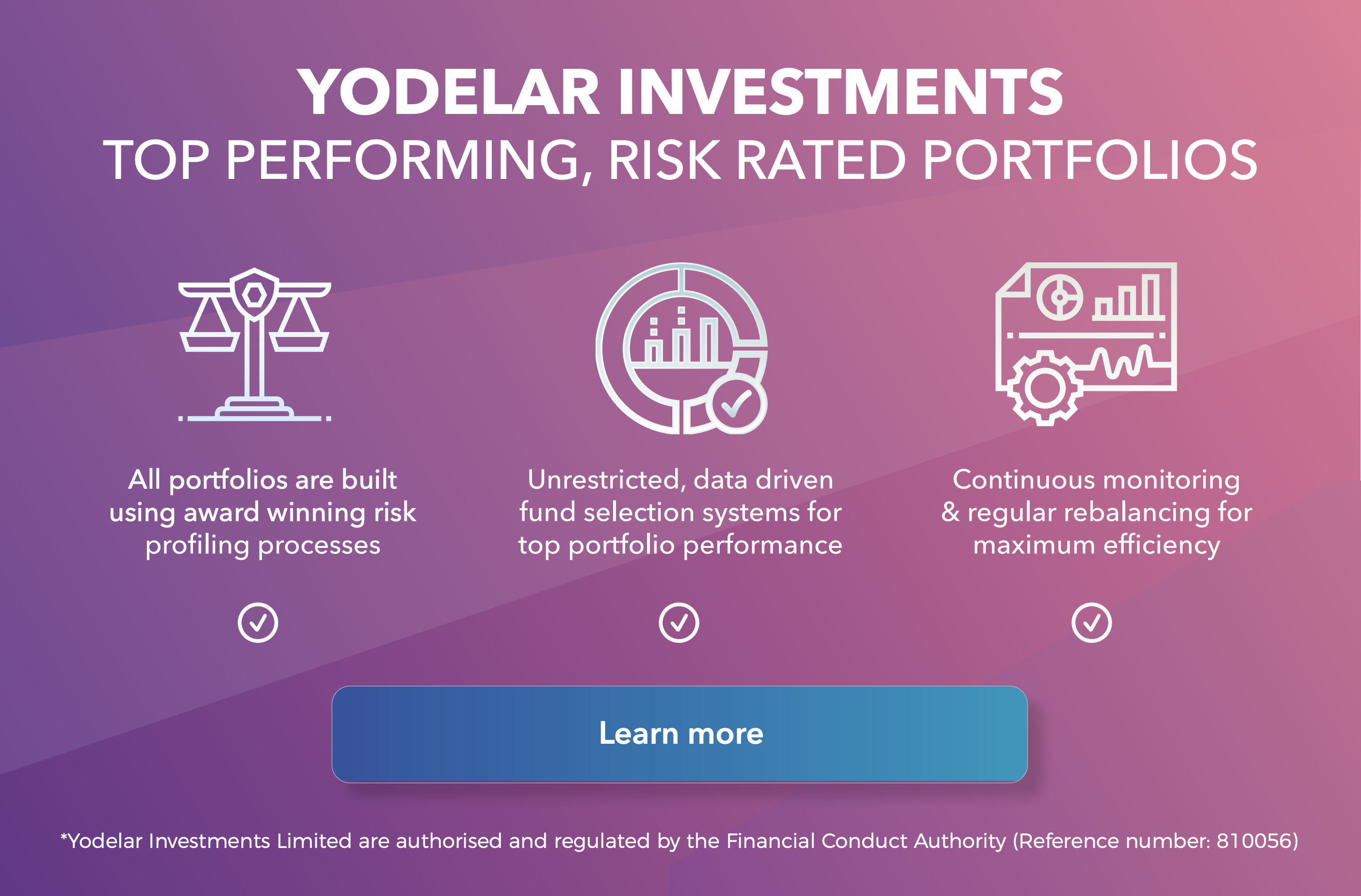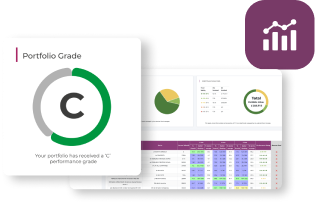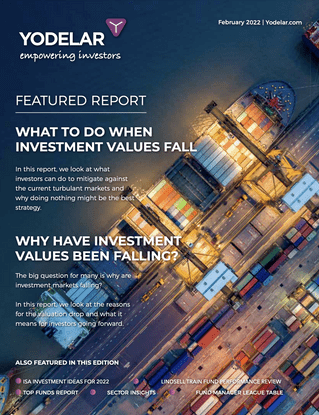- Efficient active portfolios significantly outperform passive and average funds
- A study by the CFA Institute on ‘determinants of portfolio performance’ found that as much as 90% of an investment’s return can be down to asset allocation
- Data is king, always know how your funds are ranked according to sector
- What investor wants to be invested in a fund that continually ranks in the worst 25% of its sector?
The success of any investment portfolio will be determined by the level of returns it delivers over a reasonable period of time. Much of these returns will be controlled by the condition of financial markets which during challenging times can often be unpredictable and volatile.
While the performance of investment markets will always be out of our control, there are many factors that investors can control which can have a substantial positive impact on the level of returns a portfolio delivers.
Successful long term investing requires several factors to align. In this article we will detail the main characteristics that must be efficiently managed in order to have a top performing portfolio.
We will also identify how the difference in returns between a top performing portfolio and poor performing portfolio, with a similar risk model and asset allocation would have been as much as £59,000 over the recent 5 years from an initial investment of £100,000.
A carefully defined and optimised maintained strategy will make it possible to navigate almost all conditions efficiently, minimising losses during periods of negative growth and maximising growth opportunities during positive periods of growth. Below, we detail 7 aspects of investing, that if managed efficiently will help to deliver successful investment outcomes.
Diversification
Portfolio diversification is the process of spreading investments across different asset classes, industries, and regions to reduce the risk of losses due to the poor performance of a single investment. The idea is that by investing in a variety of assets that behave differently, the overall risk of the portfolio can be reduced.
For example, if an investor only invested in a single market (say North America), they would be taking on significant risk because if that market underperformed, the entire investment portfolio would suffer. I If invested across a mix of equity markets, bonds and money market instruments, the risk would be spread across different types of assets, and the impact of any one underperforming asset would be reduced.
4 elements of diversification
Asset class diversification: Diversifying across a mix of asset classes such as equities, bonds, and cash, is an essential element of risk management.
Industry diversification: Investing in companies from different industries, such as technology, healthcare, and consumer goods, will help to reduce the risk of the portfolio because different industries have different performance patterns.
Geographical diversification: Investing in companies from different regions and countries will reduce the risk of the portfolio from being over reliant on any one region as different regions and countries have different economic and political conditions that affect investment performance.
Market cap diversification: Investing in companies of different sizes, such as small, mid, and large-cap companies, can also reduce the risk of a portfolio as different-sized companies have different levels of risk and return.
By diversifying a portfolio across different asset classes, industries, regions, and market caps, investors can help to reduce the risk of losses due to the poor performance of a single investment.
Asset allocation
Asset allocation and diversification are intrinsically linked but it is the asset allocation strategy that will dictate how well a portfolio is diversified.
Asset allocation is the process of dividing an investment portfolio among different asset classes such as stocks, bonds, and cash based on an investor's investment goals, risk tolerance, and investment horizon. Its purpose is to balance risk and reward by diversifying the portfolio across multiple asset classes with varying levels of risk and return.
For example, a higher risk portfolio will typically have a high weighting in core equity markets such as emerging markets, Asian equities, North American equities, UK and European equities. Whereas a lower risk model will have a lower weighting in equity markets and a higher rating in fixed interest investments such as government bonds or money market instruments. The balance of assets is critical to the risk exposure of all investment portfolios, which is why the allocation of assets must be defined and managed effectively.
One of the main reasons asset allocation is so important is because nobody knows with any degree of certainty what asset classes and global markets will be the best performers over different periods. Therefore, the most efficient way for investors to capture the returns of the markets and minimise overall volatility is to invest with diversity and spread their portfolio's assets.
A study by the CFA Institute on ‘determinants of portfolio performance’ found that as much as 90% of an investment’s return can be down to asset allocation. Although there are many different asset allocation models available, they are each defined by risk. More specifically, what level of investment risk we are willing to tolerate in the pursuit of returns.
For some investors, the lure of performance can lead them to make investment decisions that can have huge implications. For instance, when a particular sector such as the North American or the Technology sectors performs strongly, investors without a disciplined strategy may be tempted to abandon their asset allocation model to increase their exposure to these markets. But such an approach makes investors vulnerable to a market correction, which could have a huge impact on their chances of meeting their financial goals.
We regularly see self investors or those that get advice with poor asset allocation suffer greatly from this. Being able to spread your risk across various countries shields investors from country-specific conflicts and regulations. In this way, if one country struggles economically due to regional issues, your portfolio will feel that it affects less.
Fund Selection
We define a better performing fund as one that consistently performs better than 75% of same sector funds (i.e. top 25%), yet the reality is that many portfolios on the market include funds that perform significantly below this percentage, with funds often ranking in the bottom 25%.
Advice firms are not required to know which funds or fund managers perform well and with more than 100 different fund management firms in the UK offering investors access to thousands of investment funds it can be a challenging task to find the best options. To add further complexity, new funds enter the marketplace each month adding to the thousands of funds that are currently available.
As many larger fund management firms provide a range of risk rated portfolios that only contain their own brand of funds, many of which are poor performing, it can prove limiting for investors.
The solution is to understand which funds and fund managers perform better than others. To help investors understand this we analyse 85,000 funds every month and provide easy to digest reports that identify the true performance of investment funds and fund managers.
Register for free access to our research platform
Consistency is an important indicator of quality and success, and it is integral to our portfolio management philosophy. We believe consistency displayed by investment funds that maintain a high sector ranking over continuous periods reflects efficiency and expertise from the fund manager through their ability to deliver competitive returns for their clients over both the short and long term.
In the short-term with changing political and economic markets it is unrealistic for even the best fund managers to continuously maintain a level of performance from their funds that exceed that of the majority of their peers. But analysing performance over a 1, 3 & 5 year period will take into account differing investment cycles and will help to identify the funds and fund managers that specialise and excel in a particular market.
DATA IS KING: An important point to make is that in an industry full of sharp marketing practices, pompous brand prestige and sometimes misleading sales pitches it is of the utmost importance to be informed and have access to factual information. Investors need to be aware how the funds they are invested in rank within their particular sector in order to determine how efficiently they are invested
Past performance is not an indicator of future returns, but it exposes the effectiveness of funds and their fund managers. The funds that consistently rank highly in their sectors can reflect a level of expertise from the manager within that investment sector. Whereas, the fund managers whose funds continually rank lowly within their sector have demonstrated a lack of quality and an inability to deliver competitive returns for investors. Past performance is not an indicator of future returns, but it is important information that holds fund managers accountable for their performance.
What investor wants to be invested in a fund that continually ranks in the worst 25% of its sector, when so many more productive choices are available, and often at a lower annual cost?
For those that have maintained a high level of comparative performance, it is reasonable to assume they can do so in the future. Ultimately, fund performance is a critical metric that efficient investors and high-quality advice firms analyse to help ensure their portfolios productively meet objectives while utilising the proven top-performing fund managers.
Risk management
Portfolio risk management is the process of identifying, analysing, and mitigating the potential risks associated with an investment portfolio. A large part of risk management can be attributed to asset allocation and portfolio diversification but there are other risks that must be considered and effectively managed.
Regularly monitoring a portfolio and making adjustments as needed is an important risk management technique. This can involve tracking the performance of individual investments, analysing market trends, and reviewing economic indicators to identify potential risks and opportunities. Investment cycles are often influenced by broader economic conditions, such as interest rates, inflation, and economic growth. It is important to consider these factors when making investment decisions, as they can have a significant impact on the performance of individual investments and the overall portfolio.
In terms of when to make changes to a portfolio, this will depend on individual circumstances, investment goals, and risk tolerance. However, changes to a portfolio may be warranted if an investment is consistently underperforming or if broader economic or market conditions have changed significantly. It is important to carefully evaluate the potential risks and rewards of any investment decision and seek professional advice if needed.
Regular Rebalancing
Over time, the performance of different assets within a portfolio can shift, leading to an unbalanced portfolio. Regular rebalancing is an essential aspect of efficient portfolio management that should take place at least every 6 months to ensure your portfolio maintains the desired asset allocation and remains aligned to your overall objectives.
Portfolio rebalancing is the process of adjusting the asset allocation of an investment portfolio back to its original or target allocation. This involves selling or buying assets within the portfolio to restore the desired mix of asset classes.
Rebalancing is important because over time, the performance of different assets within a portfolio can lead to changes in the portfolio's asset allocation.
If, to fit a particular risk profile, a portfolio has a 60% weighting in equities and 40% in bonds, this can shift overtime if either one of these outperforms the other. This inturn would reduce the weighting in one and increase the weighting in the other, potentially increasing the portfolio's risk exposure.
However, as part of a diverse asset allocation model, within a portfolio there will typically be different types of equities that are weighted in different regions and industries. The differing performance of each can also alter the spread of assets and disrupt a portfolio's overall balance.
For example, using the same 60% equity 40% bond portfolio, the 60% equity portion could be made up of 15% North American equities, 15% UK equities, 15% European equities and 15% Emerging market equities. The performance of each region will likely differ during different periods, therefore, if we assume the North American and UK equity market outperformed other equity markets, then the portfolios weighting in these markets will increase whilst the exposure to European and Emerging market equities will have decreased. As asset allocation and diversification defines a portfolio's risk, when this allocation shifts it can impact the level of risk a portfolio assumes. Failure to identify and rectify these swings within a suitable time frame could have serious consequences particularly if the markets an investor becomes overexposed to were to suffer a sharp drop in value.
Portfolio Charges
The balance of quality and cost can be difficult for investors to determine, but research shows that quality should always outway cost. The fact is the difference between the performance of high quality funds that make up a portfolio is typically much greater than the difference between a low cost portfolio and that of a more expensive portfolio.
For example, a study completed by the Financial Conduct Authority (FCA) identified that on average an actively managed portfolio will have total ongoing investment fees of 1.70%. This includes ongoing investment advice fees of 0.80%, and an average charge of 0.90% for actively managed portfolios. In contrast, passively managed portfolios average 0.34%, which is a sizeable difference, and one that can define how and where an investor invests. But research shows, net of fees, a portfolio that contains high quality actively managed funds will outperform a low cost passive or tracker portfolio as these types of funds simply follow the index and will only ever provide average returns. Passive funds can never outperform, but high quality actively managed funds can and often do by significant amounts.
In the example below we have built 3 portfolios using the exact same asset allocation model and risk profile. The only difference between these portfolios is the underlying funds that are used to represent each asset class. For portfolio 1, we use funds that have consistently ranked among the top 25% performers within their sectors. For portfolio 2, we use funds that have an average sector ranking similar to that of low cost index tracker funds and for portfolio 3 we have used funds that have continually underperformed by ranking in the bottom quartile of their sectors over the past 1, 3 & 5 years.
The above table shows the cumulative performance of each portfolio over the most recent 5 years.
The above analysis represents the very top, middle and bottom of the spectrum when it comes to fund performance, but it provides a real indication as to how a top quality portfolio with comparatively high charges would have outperformed a low cost portfolio that delivered average returns. It also highlights the large gulf between the underperforming funds at the bottom of their sectors and how the quality of funds that make up a portfolio will have a larger bearing on returns than any charges.
Although charges are an important factor, particularly for low risk portfolios which typically yield lower returns, they should never take precedence over quality.
Get Quality Investment Advice
While the key factors for good investment advice can add value to any investment portfolio there are a number of additional factors that most advisers don't utilise, factors that can add even more value to investors.
Although financial advisers can add sizeable value to investors over the course of their investment horizon, only a relatively small proportion have a high level knowledge of fund and fund manager performance. 2 areas that if measured and used effectively to implement and maintain a top performing portfolio of funds, can add significant additional value.
Such advisers are able to build and manage efficient portfolios suitable to their clients’ risk profile and overall objectives. But like any industry, there are those who are good at what they do, and there are those who are not. The main difference in the financial sector is that it is very difficult for a client to know whether their adviser has the expertise until they take the chance and invest with them.
If your portfolio is managed by a financial adviser you want to make sure you are partnered with someone with a research driven knowledge in fund performance. There are financial advisers who demonstrate great expertise and knowledge when it comes to fund selection. However, fund performance is not a regulated aspect of financial planning, and financial advisers are not required to research funds. As a result, a large proportion demonstrate poor knowledge on the quality of funds they recommend.
Quality advice and portfolio management firms understand fund and fund manager performance and are able to use this knowledge to identify the best options and build efficient, top performing portfolios. It is this process that distinguishes the top advice firms from the rest.
Efficiently Managing Your Investments
We believe as investors, growth should be the primary aim and as such our strategies are built upon using quality funds and fund managers who have a proven history of outperforming the markets. This unbiased approach allows us to focus only on what really matters, to think independently and to maintain a long-term perspective.
It is this quality driven approach that we believe will yield the best investor outcomes in the medium to long term. There are many pitfalls to investing but this article details the core topics that if effectively managed will add value to any portfolio.
At Yodelar Investments we implement efficient processes to ensure all of our portfolios follow best practices for all topics featured in this article.
The development of our portfolios comes from years of research and analysis that included the consistent assessment of more than 100 fund managers, tens of thousands of funds and more than 30,000 investment portfolios. Our research identified that only a small proportion of funds and fund managers have consistently delivered top performance, with more than 90% of the portfolios we reviewed containing funds that continually underdeliver. This research has enabled us to identify efficient processes and top-quality investments which we have utilised to create strategically balanced, risk-rated portfolios that are built using only top quality funds within each asset class and offer investors excellent potential for growth.
Yodelar provides an advice and information service that is changing the way investors think. Book a no obligation call with our team today and find out how we can help you grow your wealth efficiently.



